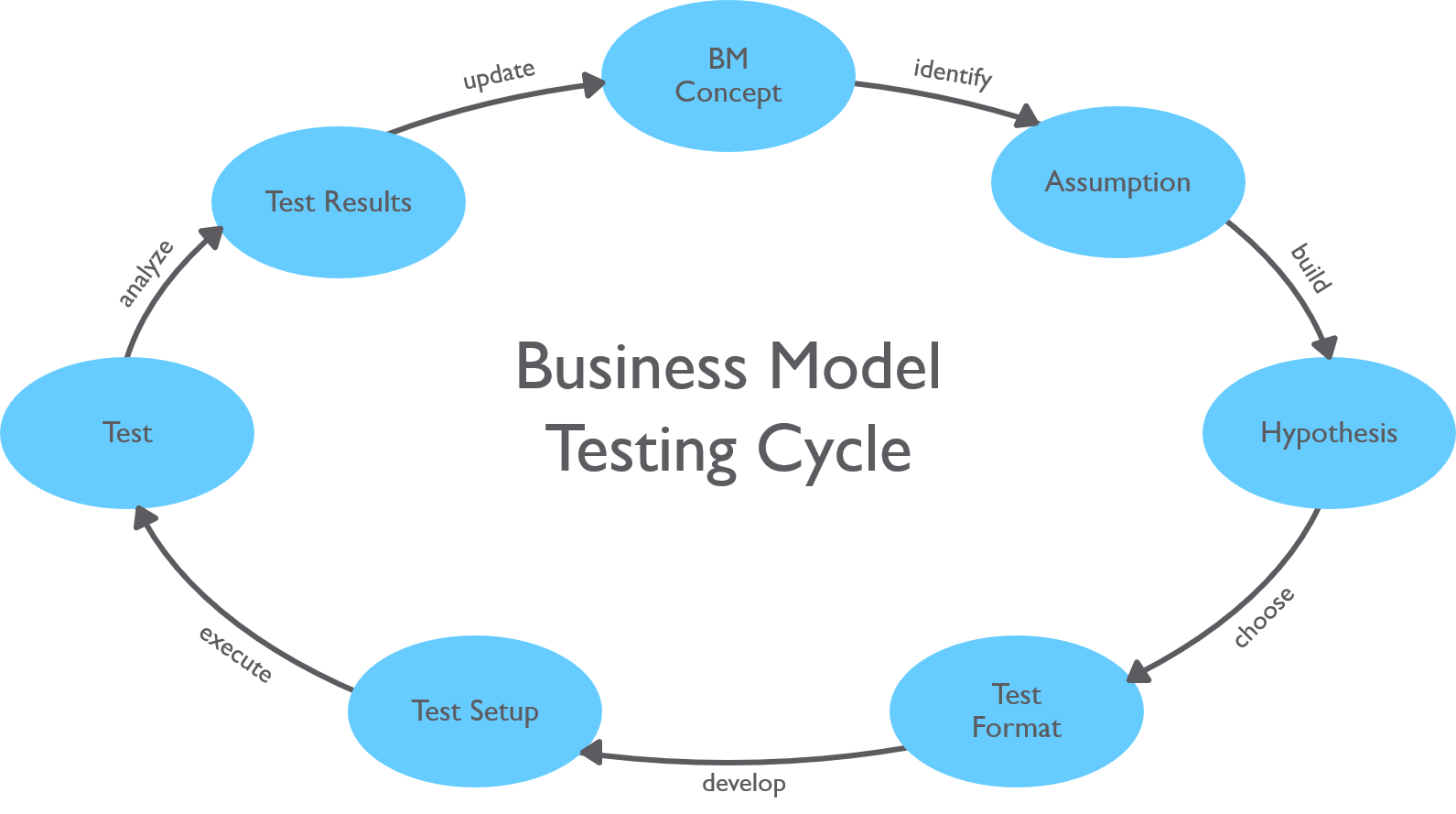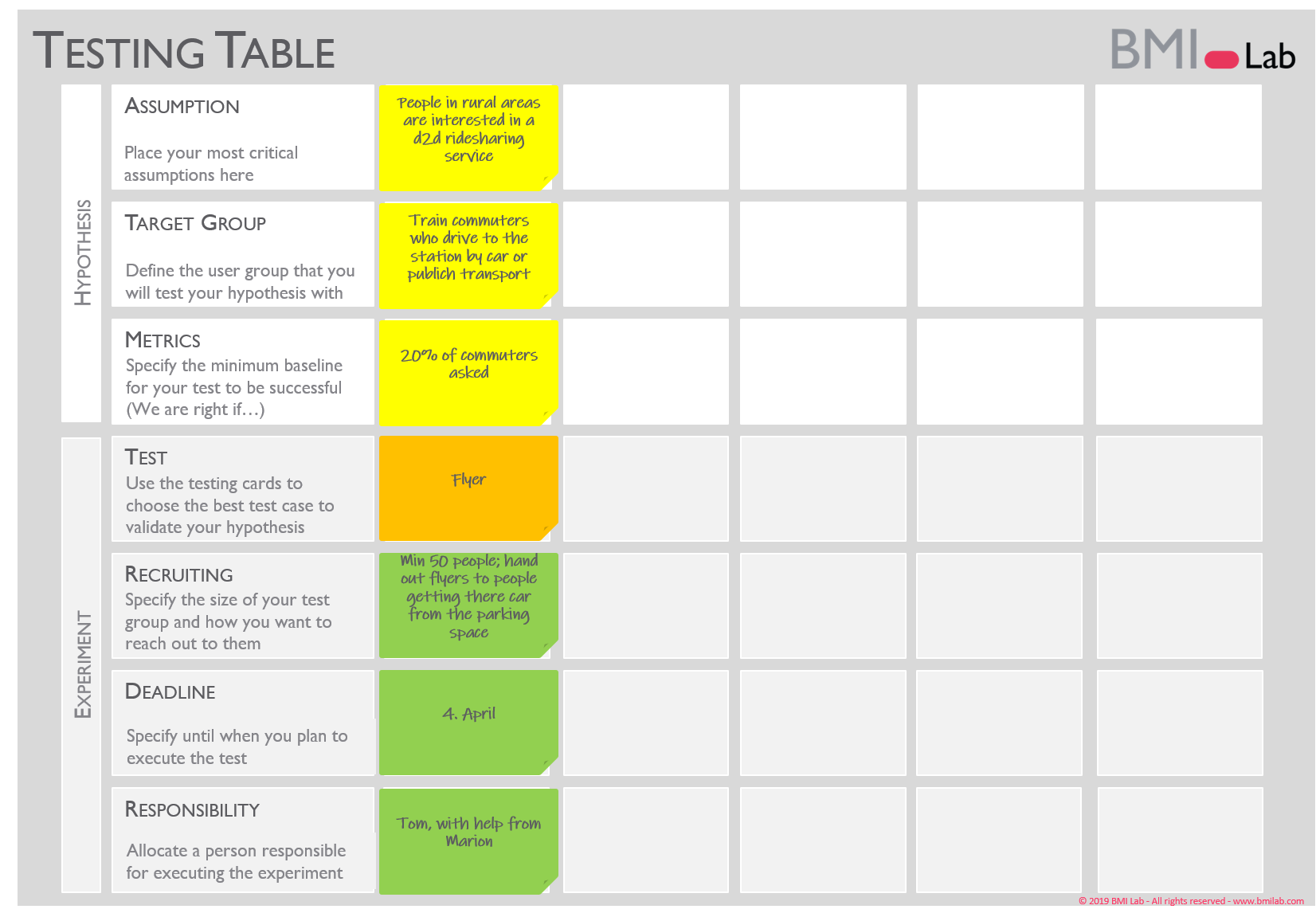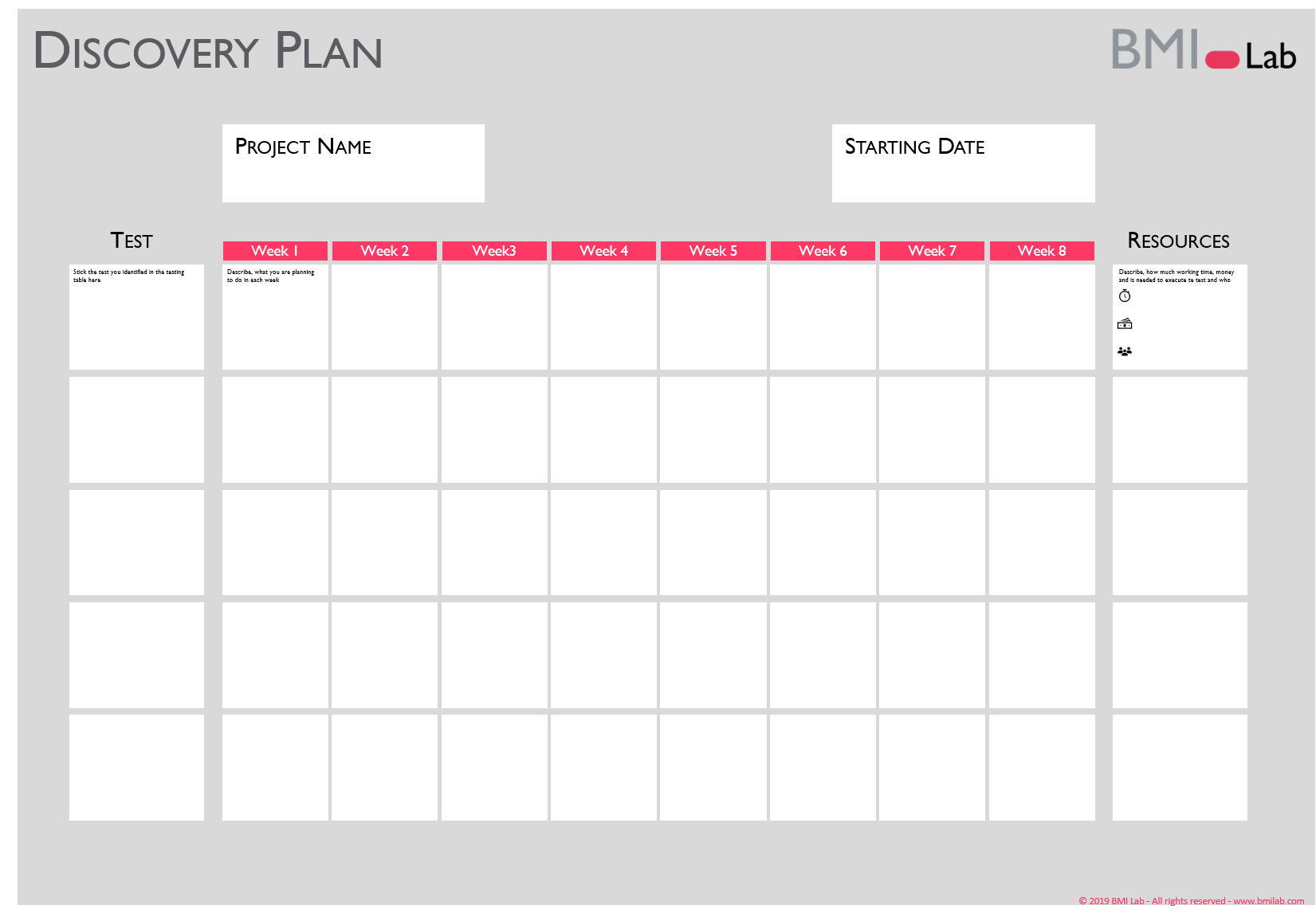Most companies we have worked with have become excellent over the years in business model development – generating new business (model) ideas. With the help of tools such as the Business Model Navigator, Design Thinking, and the Blue Ocean Approach businesses have been able to gain highly useful insights into the perspective and needs of their customers. They have also been able to form compelling value propositions and business model concepts.
At this point, however, most companies tend to stop the development process. They fall back into the old thinking of building the "perfect" solution before talking to their customers. By so doing, they end up missing out on the benefits of co-creation and adjustments along the way. The problem with this widespread approach is that it is:
Costly
Resource-and time-intensive
"Perfect" in the eyes of the creators, but not to the customers
Business Model Development: The Business Model Testing Cycle
The key to preventing spending unnecessary amounts of resources and time on developing a business model is through the continuous testing of its most critical aspects. That way, companies get fast feedback from customers, users, and partners regarding the feasibility of the model. This guide will help you:
Understand the testing process step by step
Choose the right tools that can help you find the right questions
Understand the best test formats and setups for the successful development of your business model
It is important to note that this guide is industry agnostic and is valid for both B2B and B2C business models.
Business Model Development: How to build hypotheses
Having filled out a business model, the next great step in the business model development process is the canvas. Often, however, it is regarded as the final step before developing the final solution to be presented to the customer. Canvas information is simply a set of assumptions that need to be validated in order to check the feasibility of the BM. In other words, it is the menu that you can use to find out what you need to test and who you want to test it with.
To make the canvas actionable and usable to prepare your tests, here’s what you need to do.
1. Identify ALL the underlying assumptions
Go through the canvas and check which parts you are certain of and the ones that need to be validated. Be very rigid with yourself. Any falsely assumed knowledge will catch up with you sooner or later. Invite others to have a look at your concepts – sometimes the things you think are facts are not. In a corporate setting, look at both the external (customer or partner-focused) and the internal (company focused) assumptions. Even the most promising idea will have no chance of success if it does not fit into the corporate's strategy or culture.
2. Prioritize the assumptions
You cannot test everything at the same time. Rank the identified assumptions according to how critical they are towards the success of the business model. To help you discover the most crucial assumptions for any business model, we have created the "Assumption Juice Press". Afterward, check how easy or difficult it will be to test these assumptions. Concentrate on the most critical assumptions that are easy to test first. After you've validated these, you can start checking the more difficult and less critical ones.
3. Build hypotheses
Assumptions are not actionable. In order to validate them, create a falsifiable hypothesis. To create a falsifiable hypothesis:
Choose your assumption from the ranked assumptions list
Identify the target group you want to test the assumption with
Choose a baseline and metric to make the assumption falsifiable
To understand how to build hypotheses, let's look at an example of Swiss mobility provider who wanted to test a door2door ridesharing service in rural areas. The most crucial assumption related to the project was that people from rural areas were willing to use the service frequently. In this case, the assumption was too generic to be tested. In order to make it more concrete, they identified different use cases.
The most important use case that would show them whether the service could be a success was the case of a commuter. The commuter, in this case, could potentially use the service twice a day to get from their home to the train station (target group). Next, to determine the number of commuters to be interested in the service, they needed a baseline. For the business to be a success, the company needed at least 20% of the total number of commuters in this train station to be interested in downloading the app (baseline & metric).
From the above information, they formed this hypothesis:
20% of commuters from the rural area of a specific small city in rural Switzerland are interested in downloading the app and potentially using our door2door ridesharing service to ride from their homes to the train station.
In order to help you with the exercise of creating hypotheses to test, we have developed the BMI Testing Table. This tool will guide you through the test setup, from start to finish. In the "Hypotheses" section, you can build your most critical hypotheses as shown below.
This process is not a one-time exercise. With each verified or falsified hypothesis, you will be able to adjust your business model canvas – change some parts of the canvas and add others. This can lead to new assumptions being made. These hypotheses are the fuel that keeps the business model development engine running.
Business Model Development: The BMI Testing Cards – Finding the best test format for your hypotheses
One subject where we have seen that additional support is particularly helpful is choosing the right test format for validating a hypothesis. Some test formats make more sense than others at different stages in the business model development process. Nevertheless, according to the particularities of the business model tested (service/product; B2B/B2C), there are multiple options that can lead to successful tests.
To aid innovation projects in finding and choosing the right test format, we have identified 22 test formats that can help you validate all aspects of your business model.
You can find out more by yourself and see all 22 Testing Cards here.
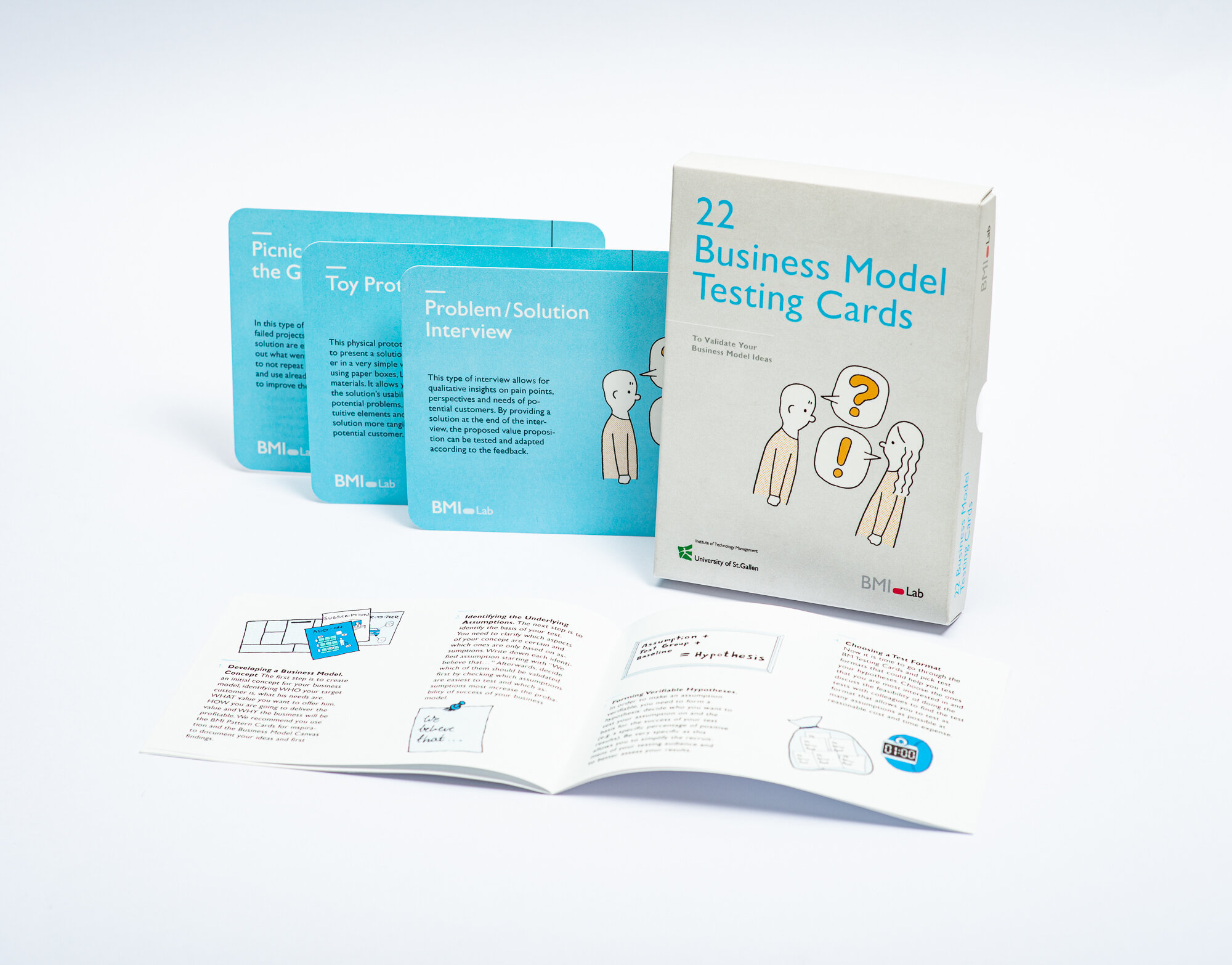
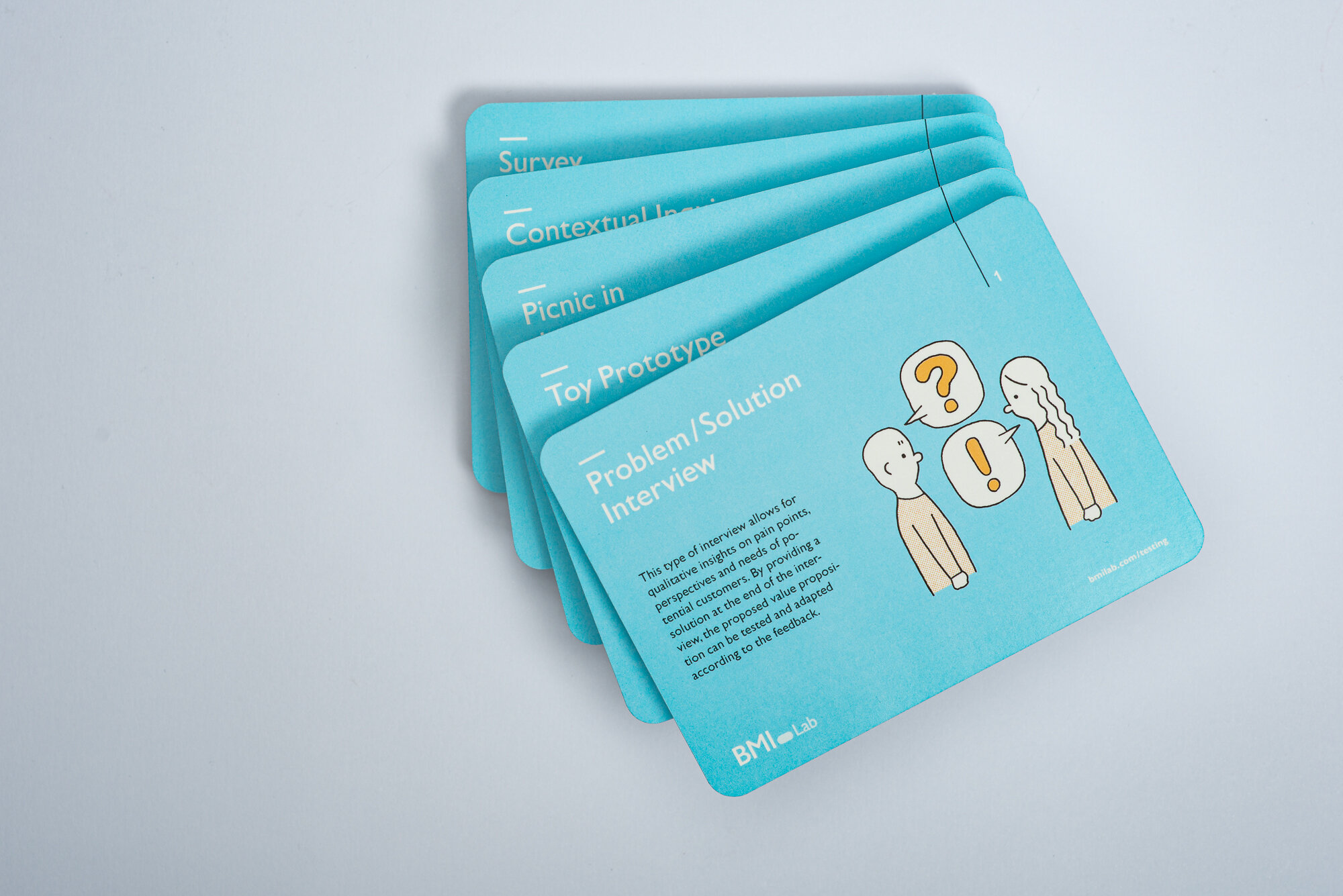
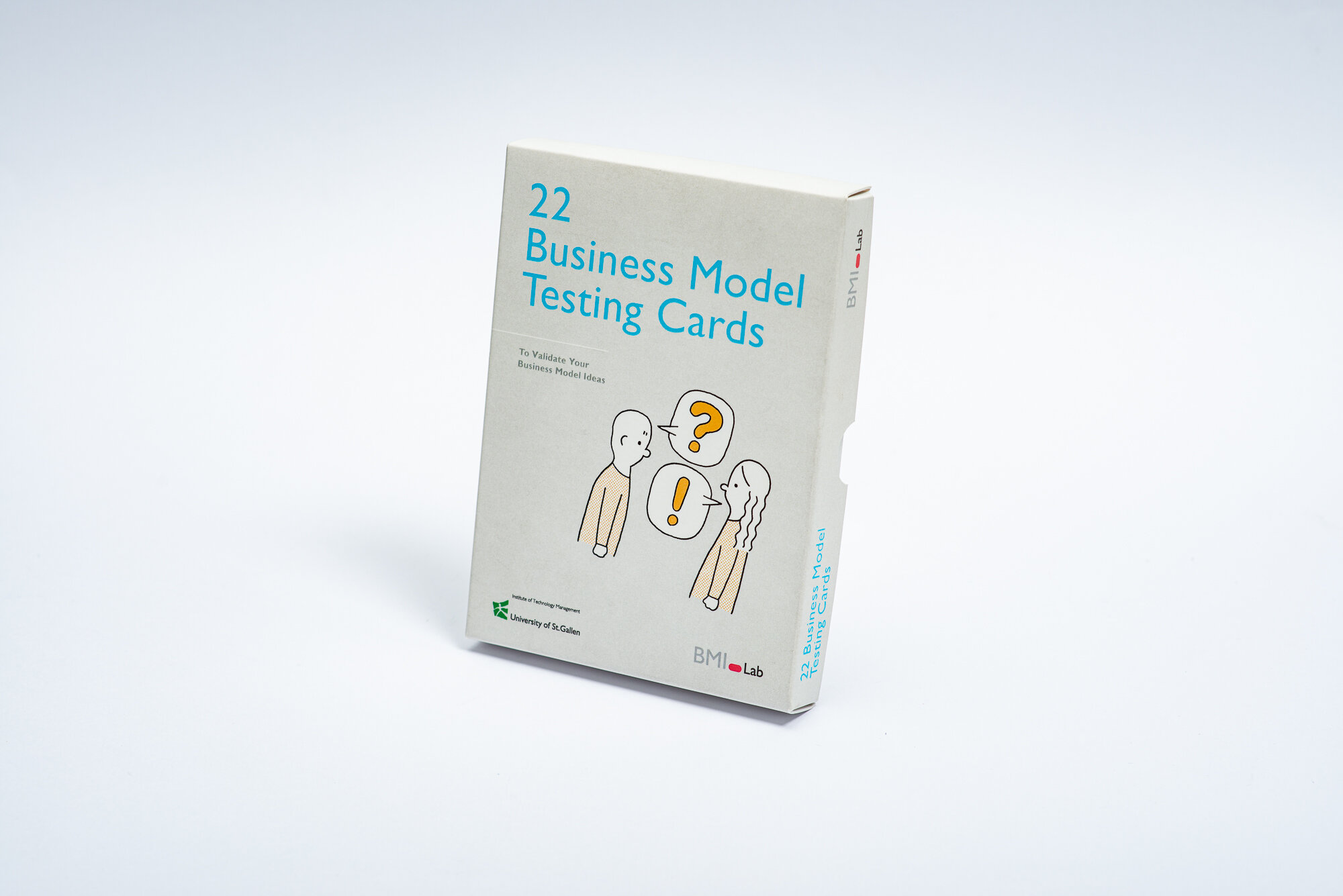
Working with the testing cards is easy; pick up the testing card set. On the front, there is a short description of the test format and an example. Go through the card set and choose the ones that are applicable to each of your hypotheses. Once you have decided on which test format to go with, turn to the back of the card and check the “how to” guide for implementation of the test.
Once you have chosen a test format, think about how you want to recruit for the test. Recruitment is often overlooked but it is key to a good test performance. It is important to get the right test group for your test. However, recruitment is time-intensive and may delay your plans for execution of the test. Lastly, decide on a deadline and clearly define who has the responsibility for the preparation, execution, and consolidation of the test.
Using the testing table, you can simply fill in the "Experiment" section to document:
The test you want to take
How you want to recruit
The deadlines you set
The one to take responsibility
In the case of the Swiss mobility provider, they decided to use flyers as an early test format to validate their hypothesis about the interest of commuters using the service. To recruit, they decided to hand out the flyers in-person to customers at train stations and parking spaces around the train stations. They took advantage of this time to explain their concept directly to the commuters. By so doing, they made sure that the test group had understood the value proposition and that their flyers wouldn't go into waste. Other tests they used to validate different hypotheses included interviews, a survey, and a concierge MVP.
Business Model Development: The BMI Discovery Plan – Setting up your tests week by week
Now let's dive into the nitty gritty; after you have chosen the test format, describe on a weekly basis what you are planning to prepare, execute, and consolidate the test. Use the back of the testing cards as an inspiration. Once you have a clear picture of everything that needs to be done, get an estimate of the time and resources that you need to make the test happen. At this point, you have a solid decision basis for testing and implementing your business model, go to the customers and execute the test!
To document your results, we have created the BMI Discovery Plan tool. Use the plan to pick a hypothesis from the Testing Table and decide what you are planning to do each week until you finish your experiment. Do not forget to take enough time to recruit and to consolidate your findings. Once you know what you need to do, estimate how much human, time, and financial resources you will need for executing the test.
The execution of the tests is straight forward – do as you have laid out in your discovery plan. However, more often than not, things go differently in real life than how you expect them to go. It is, therefore, important to review the progress of your test early enough to see whether you need to change some things to get meaningful results. If you see that a test will not yield the expected results, try out different setups to see whether the initial setup was responsible for the result. For instance, it might happen that the recruitment has not worked properly and that you have the wrong target group. In such a case, don't spend all your resources finishing the flawed test. Stop and restart the test with a different test group.
The other important point in regards to the execution of tests is to get meaningful feedback. Often, testers are so focused on delivering the perfect test that they forget to ask for feedback. Before starting a test, have a clear strategy on the feedback. Have in mind the feedback format you wish to have, the timing of receiving the feedback, and the content of the feedback. A test without feedback is meaningless as you have only a limited possibility to verify or falsify your hypotheses.
The last step in the Business Model testing cycle is the analysis of the feedback and the integration of the feedback into your initial business model concept. You can go back to the initial canvas and on post (it's in a different color) and write down the key learnings you have gathered from the test. After that, you can go ahead and compare the initial assumptions with the key learnings and update the section in the canvas.
Conclusion
Developing new business models can be hard, especially without the right tools and processes to guide you through the testing process. Using our Business Model Development – Testing Cycle, you will be able to always know where you stand and what is next on your to-do list. The BMI Testing Cards are a useful tool to brainstorm on different formats. The tool will help you find less resource-intensive solutions for showing your offering than directly building the final solution. However, none of it will work if you don't show some commitment to do the tests and talk to potential customers. Always have in mind that even the best plan fails if it is not executed!
For more information and inquires on business model development, the BMI methodology, the BMI tools, or have feedback, please contact Peter Brugger @ peter.brugger@bmilab.com

